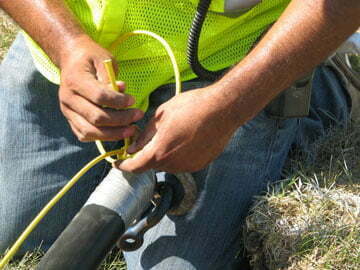Copper-clad steel tracing wire plays a significant role in various industries, but its environmental impact deserves careful consideration. Understanding this impact is essential for promoting sustainable development.
One major environmental concern is the extraction of raw materials. Mining copper and steel can lead to habitat destruction and soil degradation. These activities disrupt local ecosystems and threaten biodiversity.
Additionally, the manufacturing process of copper-clad steel wire generates waste and emissions. Factories often release pollutants into the air and water. This pollution can harm surrounding communities and wildlife.
However, copper-clad steel tracing wire also offers environmental benefits. Its durability reduces the need for frequent replacements. Longer-lasting products lead to less waste and lower resource consumption over time.
Moreover, the wire’s excellent conductivity improves energy efficiency. In applications like telecommunications and electrical systems, efficient energy transfer reduces overall energy consumption. This efficiency contributes to lower greenhouse gas emissions.
The wire’s recyclability is another positive aspect. Both copper and steel can be recycled effectively. Recycling reduces the demand for new raw materials and minimizes environmental impact.
Despite these advantages, challenges remain in ensuring sustainable practices. Not all manufacturers prioritize eco-friendly processes. Companies must adopt sustainable manufacturing techniques to minimize their environmental footprint.
Furthermore, users should consider the entire lifecycle of the product. From production to disposal, each stage has an environmental impact. Awareness of these impacts can lead to better decision-making in material selection.
Regulations and standards play a crucial role in promoting sustainability. Governments can implement policies that encourage the use of environmentally friendly materials. These policies can drive innovation and improve industry practices.
In addition, collaboration between industries and researchers can foster sustainable development. Partnerships can lead to new technologies that reduce environmental impact. Such innovations may include improved recycling methods and cleaner production techniques.
Education and awareness are essential for promoting sustainable practices. Industry professionals and consumers should understand the environmental implications of their choices. Increased awareness can lead to greater demand for sustainable products.
Looking ahead, the future of copper-clad steel tracing wire can be more sustainable. As industries focus on reducing their environmental impact, this wire can play a key role. Its benefits, combined with improved practices, can contribute to a greener future.
In conclusion, copper-clad steel tracing wire has both environmental impacts and benefits. While raw material extraction and manufacturing pose challenges, its durability and recyclability offer positive contributions. By adopting sustainable practices and fostering collaboration, industries can minimize negative effects and promote a more sustainable future.

